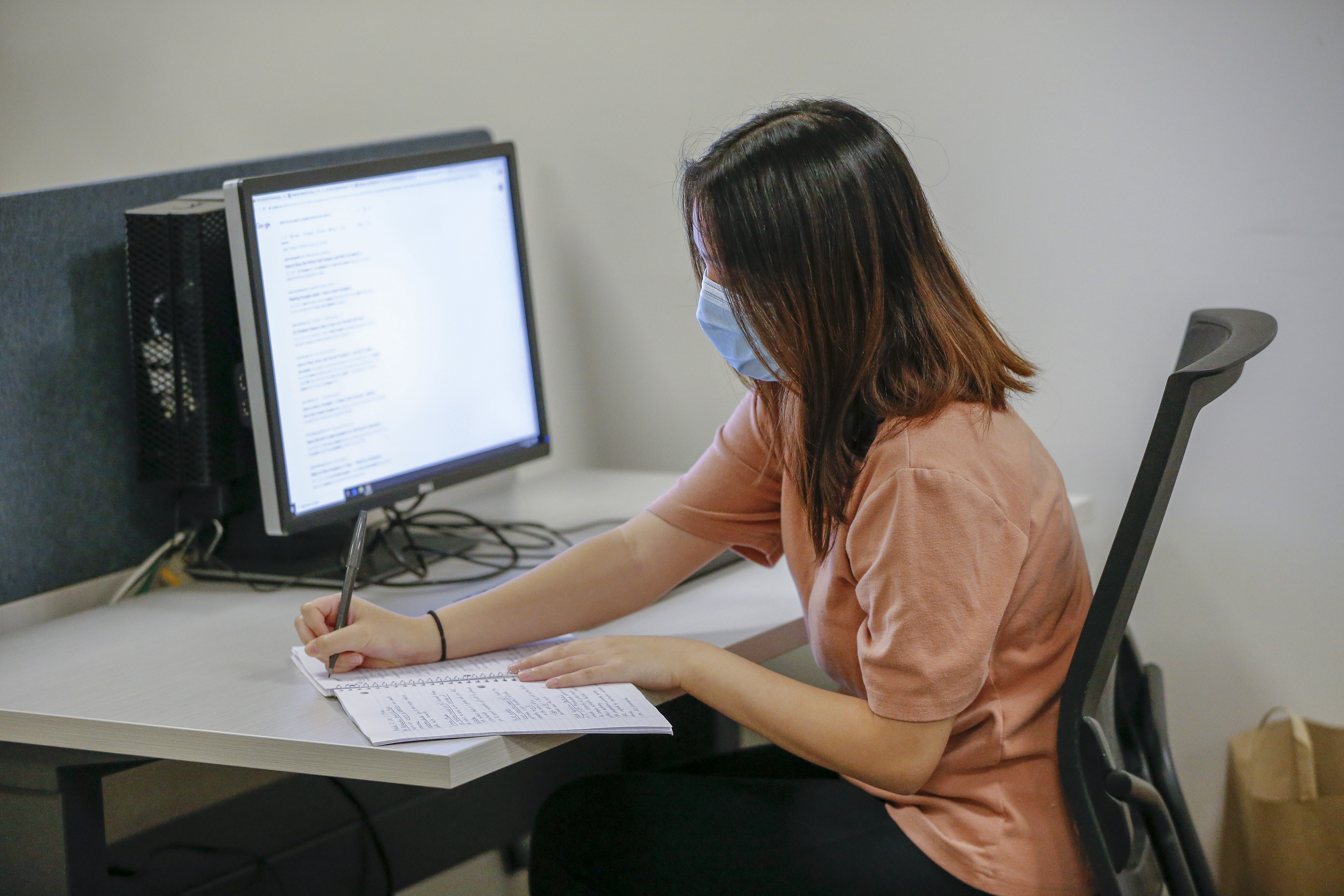Like industries and higher education institutions across the globe, the Retail Merchandising Program has had to quickly shift to working and learning remotely. Through the use of new technology and ingenuity, retail merchandising faculty, staff, and students have come together to embrace this new learning landscape.

The following is a guest post from Retail Merchandising Program Director Hye-Young Kim.
Adapting teaching for remote learning
In her recent publication, entitled “The Role of an Interactive Visual Learning Tool and Its Personalizability in Online Learning: Flow Experience,” Associate Professor Hyunjoo Im argues that online tools can enhance student learning by allowing students to determine the pace of learning and level of challenge. While online learning lacks face-to-face interaction with the instructor and peers, this personalization of the learning experience can produce surprisingly positive outcomes. “Through a series of experiments, we confirmed the powerful benefits of teaching online with the help of technology. Interactive visual learning tools can make the learning experience enjoyable and intuitive for students. Students enjoy challenging themselves and seeing the progress they are making through these learning tools,” said Im.
Teaching Specialist Peggy Lord has also found success using online tools. Working together with her students, Lord has altered her instruction to meet their needs by integrating live classes and pre-recorded lectures. “What has worked for me during this time is a blend of live Zoom lectures and breakout sessions with students. Before class, I post videos for my students to fuel class discussions. Afterward, I can upload PowerPoint and lecture notes for them to view on their own.” Zoom’s breakout room feature has also been an extremely important tool for Lord, as it allows her to put her class into small video conferencing groups that she can then visit during discussion times.
Keeping compassion and flexibility in mind during this challenging time, Assistant Professor Lauren Kim has also been using Zoom to help maintain a sense of personal connection with her students. “I have been holding virtual office hours once a week usually following my Zoom lecture. It’s been a very useful time and has helped to address students’ immediate concerns and questions about the lecture materials. Most importantly, this time allowed me to simply check in with students, learn how they are coping with the situation, receive feedback on online classes, and give them some comfort.”
Exploring new technology
In addition to Zoom, other emerging innovative tools like Top Hat—an education software built for professors and teaching faculty—have been embraced by the Retail Merchandising Program. Using this software, students’ laptops and phones are leveraged to take attendance, launch participation discussions and accuracy questions, and get real-time feedback. Lecturer Jaye Thompson has particularly benefited from Top Hat’s capabilities, “What I really like is it helps students focus on the lecture and stay engaged for the full duration of class; if they multitask, they risk losing participation points as everything runs in a synchronous environment and is time-stamped. For me, the most exciting part of Top Hat is its variety; I can choose from various interactive question types: multiple-choice, word answer, numeric answer, fill-in-the-blank, matching, click-on-target, sorting, and more. In response to COVID-19, the company has decided to make this tool free of charge, so now is the time to try it out and see how it can help advance your lectures.”
Associate Professor Juanjuan Wu’s visual merchandising class also experimented with new technology. With help from the College of Design IT team, Wu’s students were able to remotely access the college computer labs to work with 3D virtual retailing software licensed to University computers. “Assistance from the IT staff was essential for our successful adaptation to distance learning,” commented Wu. “Clay Kimber and his team, especially Joe Hallgren, Miles de Klerk, Pete Oberg, and Tara Faricy went above and beyond to give me and my students remote access. My students were able to remotely connect to the college’s computers to use this software package and maintain our learning goals.”
Students taking initiative
In addition to such an innovative group of faculty, student leaders Rachel Duerksen, Claire Erickson, Gabbie Przejurat, and Kerstin Wetterstrom have shown great leadership during this time. As Retail Merchandising Advisory Board members, they have provided a welcome respite to their peers with their email newsletters filled with useful and interesting resources. They have even selected their successors from current freshmen, sophomores, and juniors, who will continue to build the retail student tradition and legacy in the years to come.
As the semester begins to wind down, I am immensely proud of the hard work and ingenuity that everyone in the Retail Merchandising Program has shown. No matter what the future holds I know that we can face the obstacles together.
Hye-Young Kim
Program Director + Associate Professor
Retail Merchandising
When the decision was made to shift classes to remote learning, faculty, students, and staff undertook one of the biggest teaching and learning challenges to date. As the semester wraps up, our interior design instructors share how they adapted their spring classes to remote learning, the challenges they faced in the process, and what they learned through the experience.
Change is intrinsic to the field of landscape architecture, which has prepared the Department of Landscape Architecture to meet the rapid changes we are facing on a daily basis. As we begin to wrap up the spring semester, I want to share how our department has been adapting and responding.
The Goldstein Museum of Design’s (GMD) galleries may be closed to the public, but our graduate students are bringing Minnesota’s design museum to your (virtual) door.





